Jump to:
A lawn that’s been left to grow wild and is too thick to mow needs a different approach. This guide walks you through steps on how to remove overgrown grass and get your garden move-in ready.
7 Steps to Remove Overgrown Grass
1. Check the lawn for hazards
You want a clear, safe area before you start cutting. Walk through the garden and look for anything hidden in the grass—bricks, rubble, garden tools, or wire. These can damage your equipment or cause injury.
Watch out for uneven ground too, especially dips or soft patches you might not see under thick grass. If the grass has collapsed and gone flat, lift it with a rake before trimming.
2. Use a strimmer or scythe to cut tall grass
Use a strimmer (grass trimmer) or a scythe to cut down the height of overgrown grass first. Start by cutting in layers, and take your time. Don’t cut it all the way down in one go; otherwise, it will clog the tool and leave a mess. Go over the area once to remove the top, then lower the height on your second pass.
If the grass is flattened or matted, rake it up before strimming. Low-lying grass gets missed and can rot or block new growth. Do this in dry weather if possible to avoid wet grass sticking to the blades and bogging down your tool.
A lawnmower won’t help you with grass taller than approximately 6 inches; the body of the mower would flatten it so the blades can’t reach it, and if it does cut you could end up with long pieces of grass wrapped around the blade spindle, causing problems.
3. Rake up the cuttings straight after trimming
Once you’ve cut the grass down, grab a wide leaf rake to pull the clippings together. A garden fork can also help if the grass is damp or clumpy. Rake in sections to avoid missing areas, especially around edges and corners.
Bag the clippings or compost them when dry and weed-free. Thick, wet cuttings are best discarded, as they can become slimy and unpleasant if left to rot in a pile. If you have a garden waste bin, this is the time to use it.
Always clear the lawn after trimming to allow it to dry and recover.
4. Wait a few days, then mow on a high setting
Wait 3 to 4 days after trimming before mowing. This gives the grass time to recover and stand upright if flattened.
Set your mower to the tallest position. Don’t try to cut it short straight away. Taking off too much at once can stress the lawn and cause bare patches.
Stick to removing no more than a third of the grass height. Leave it for a few more days before mowing again if the lawn still looks uneven.
5. Fix any patchy or damaged areas
You’ll likely notice patches where the grass has died off or thinned out due to having neighbouring grass lying on it. If you do, get your rake working again to get rid of any leftover clippings or dead grass.
Seen any dips or uneven spots? They should be levelled with a layer of topsoil and compost before you reseed. Just spread some topsoil mixed with compost to even it up.
When that’s done, scatter new grass seeds in a thin, even layer. Then, gently press it into the soil with the back of a rake or by walking over it.
Give it a light watering once a day for the first week. When you start to see fresh growth, you can ease off on watering and do it every few days, depending on the weather.
6. Keep to a simple maintenance routine
Now that the lawn’s back under control, keeping it in shape is a lot easier—just stay consistent!
Mow at least once a week during the growing season. Don’t cut too much at once, either. Stick to the one-third rule: only take off the top third of the grass each time. Cutting more than that can stress the grass and lead to patchy growth.
During dry spells, water deeply once or twice a week rather than little and often. Early morning or evening is best, when less water evaporates.
A light feeding every 4 to 6 weeks, from spring to summer, will help the lawn stay thick and green. Use a general lawn feed, and follow the instructions.
7. Make use of your restored lawn
Once the grass is cut, cleared, and back in shape, it’s a good time to turn the lawn into something useful!
Need storage? A wooden shed or small storage unit can keep your fresh lawn clutter-free and easier to maintain. Perhaps you want somewhere to relax—a summer house might just be what you need. Stick to foldable or lightweight garden furniture so it’s easy to move when mowing.
Or try adding a few planters or raised beds around the edges. They’re easy to mow around, and they make a great cover-up for any rough spots while the lawn recovers.
Overgrown grass can feel overwhelming, but taking it step by step makes it easier to deal with. We hope this guide helps you get started and maintain a healthy lawn!
Get more tips here: Lawn Maintenance Ideas for a Beautiful Yard
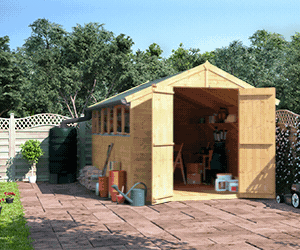

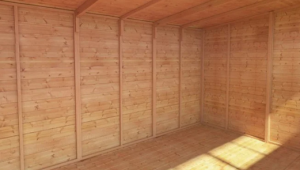


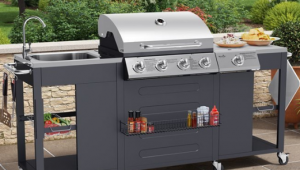
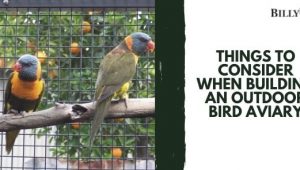

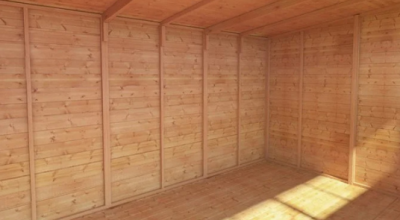
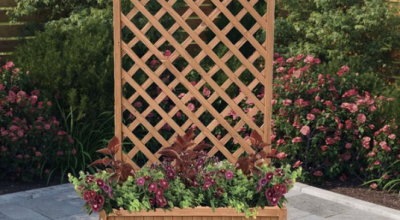

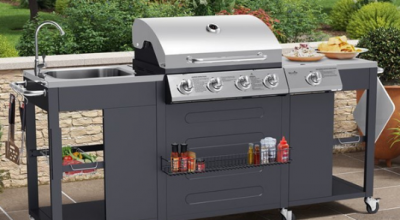

What do you think ?